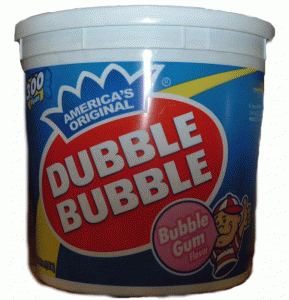An Apple A Day?
Fall is right around the corner and apple season is picking up steam. At my local farmers market, the different types of apples are outnumbering (sadly, from my point of view) the peaches, nectarines, plums, and berries.
All of those apples in their red, green, and yellow coats are a reminder of my wonderful old apple tree.
My Magnificent Tree
I’m still in mourning for my apple tree. We had this old, old tree in our front yard that was a prodigious producer of apples. Hundreds of them. Bright red and medium in size. I once brought one to my favorite fruit guy to try to identify its variety. “Old fashioned” is what I was told. Not a hybrid or genetically engineered (I’m kidding) or a fancy new variety. Just an old fashioned apple.
I loved my tree. I nursed it for 21 years. When I moved into this house it stood proud – and gnarly — along the driveway. I had a great view of it from my kitchen window. It had not been properly taken care of for a long time.
A Call To The Tree Doctor
The tree guys cabled the tree’s outreaching branches – and cabled it some more — to keep the heavy load from the apples from splitting the branches from the trunk. Five cables at last count. Over the years we lost big, big branches, the size of tree trunks. But we fed the tree and trimmed it and, in return, it lovingly produced hundreds of apples that made for wonderful eating and loads of applesauce. The garbage man and the mailman would stop each fall and ask if they could have some. “Be my guest – we have plenty.”
The Tree Gave As Good As It Got
Innumerable deer and deer babies feasted on the apples and the sweet apple leaves, at once annoying but beautiful. Driving into the driveway at dusk meant turning in slowly to make sure happily munching deer wouldn’t bolt in front of the car.
Scores of people have had to duck their heads walking onto the front lawn to avoid getting poked in the eye by the branches with kinks and turns. Lawn mowers learned quite quickly: beware the tree and its low hanging branches.
The Tree Is Down
My wonderful tree survived a horrendous March storm this year that left more than 40 local roads impassable from downed trees and wires and left my house without power for five days. What a stalwart.
Then, in the middle of summer, on a bright sunny day, I walked outdoors and the tree was lying on its side, broken low on its very wide trunk, surrounded by an array of baby apples – like they were paying homage to the queen.
Despair. I called for chain saw help. I really wanted to save some of the magnificent branches, “To do what?” my husband asked. There are times when I really hate practical questions. I needed a remembrance.
The Yard Needs A New Tree
Since the tree presided over the front lawn from such a pivotal spot – and to just plain feel better – I paid a visit to my local nursery that afternoon. I thought about replacing my tree with another apple tree, but nothing could do that, both emotionally and physically. Anyway, my type of tree really isn’t bred for nurseries any longer – newer apple trees are stronger and more impervious to a whole list of plagues.
Logic prevailed. My tree had needed deep root feeding and spraying every year. It attracted families of deer. Lots of Mama deer feasted on apples and leaves to feed their offspring. Then the offspring got big enough to chow down by themselves. The deer, wonderful to look at, provide transportation for ticks (Lyme disease is a scourge where I live) and they eat everything in sight, not just apples.
Back Home To A Vacant Spot
By the time I got home from the nursery, man with chain saw had done his work, and what was once my beautiful tree was now a heap of branches, leaves, and baby apples in the back of a dump truck. I couldn’t even rescue some intact gnarly old branches.
But looking at the heap of wood in the back of the dump truck confirmed that my tree had been strong and determined. Its massive trunk was hollow. It had been hanging on – cables and all –through sheer willpower, or treepower, if you will, for a long, long time.
An Adolescent Copper Beech
A magnificent copper beech in the making (when it grows some more) — its pyramidal branching structure covered in coppery leaves reaching toward the sky – now stands where the queen once reigned.
I’ve always loved the majesty of copper beeches – they seem gentle and at peace with themselves. There are quite a few enormous ones around my town, so I have hopes that my copper beech will reside in its new home for many years. My kitchen window frames a new view– and my family will make memories with this tree, too.
It was heartening when the FedEx delivery man, completely unsolicited, made a point of telling me, just last week, that he really misses the apple tree every time he drives down my driveway. It’s nice to know that my tree made memories for more than just me and my family. What a legacy.
Friday’s Post
Check out my post on Friday. It’s apple season, and even though I won’t have a harvest in my front yard, I’ll give you some thoughts on an old question: Does an apple a day really keep the doctor away?




